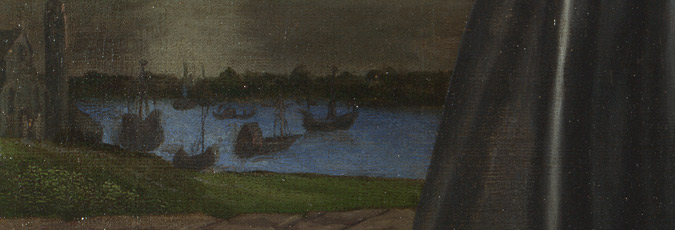Art Historian Richard Stemp examines the history and geography of 16th century Venice
Venice was the centre of the European art world in Titian's time. It was the first European port on the trading route from the East, which meant that the raw materials artists needed to creat paint arrived in Venice first so they had the pick of the finest materials.
Venice's geography
The enormous wealth and power of Titian's Venice were in part the result of its particular geography. With four rivers flowing into the sea, the silt they deposited formed mud flats and small islands, closed off by a sand bar to form a lagoon.
Settlers arrived from the mainland in the fourth and fifth centuries, escaping from marauding tribes who were pursuing the wealth of the collapsing Roman Empire. The islands were easy to defend as they were surrounded by water.
Canals and trade
The shallows between the islands were excavated to form navigable canals, and gaps were opened in the sand bar, making the lagoon tidal. Access to the lagoon could be easily guarded, and the tide ensured that the water was relatively clean.
Each house had two 'front' doors – one to the centre of the island and one onto a canal, which meant that each house was also a trading post, with goods travelling throughout the Mediterranean.
Venice was an independent republic (Italy was not unified until 1870) and its location meant that it could trade southwards with the rest of the Italian peninsula and across the Alps to the north of Europe – it became a central bazaar through which materials passed in all directions.
Lapis lazuli
Venice was the most important centre for artists' pigments. The most highly prized was derived from the semi-precious stone lapis lazuli, which could be found only in a region that is now part of Afghanistan.
Lapis lazuli was one of many valuable commodities imported along the Silk Route from the East, finally entering Europe by ship. The pigment extracted from lapis became known as 'blue from over the sea', or simply 'ultramarine'.
It is the colour Titian uses in Diana and Actaeon, a sign he was working for a wealthy and important patron. Elsewhere he also uses azurite, a naturally occurring copper carbonate, and in Bacchus and Ariadne he used both: ultramarine for Ariadne's robe, and the slightly greener azurite for the sea.
Reflected light
Venice was also famed for the production of glass, and in 'Diana and Actaeon' Titian includes images of a mirror and a vase. While both reflect light, as does the mirror-like surface of the stream, the vase also transmits it.
Reflected light is clearly important for all paintings: it is how we see them. But light can also cause problems. The red used for the curtain at the top left of 'Diana and Actaeon' is made from a pigment that was a by-product of the cloth-dyeing industry (fabric was another of Venice's important commodities).
The red colour comes from dried insects and, like many organic substances, it has a tendency to break down, and sometimes fades with exposure to light. This is particularly noticeable across the top of the curtain.

The decline of Venice
Shortly after Titian was born, the Portuguese explorer Vasco da Gama discovered a trade route to India around the Cape of Good Hope and the Venetian monopoly with the East was broken: from this time onwards, Venice's supremacy was bound to decline.
Spain also developed its colonies, bringing in vast wealth – even at the height of Venice's power, Titian was painting for the Spanish king.


